Warm Up:
- Something fun. Or at least painless.
Blue Only:
- ??
Optional Test Retake
Gold Only:
- ??
Optional for anyone:
Check-in, regarding projects and the Current and Circuits Test concepts (for those taking the retake)
Blue Only:
- Projects are due. Last day for seniors.
- Senior test retake?
Blue Only:
- Email me if you are a senior and you want to do the test retake early.
- Project Work Time. If you're hot, you can work outside.
Warm Up:
Last Physics Test! for everyone -- Electric Current and Circuits
Gold Only: Project Work Time
Warm Up:
Today -- Everyone --
- Explain the String Instrument Project (more of a prolonged activity). Share an example and explain how to do everything.
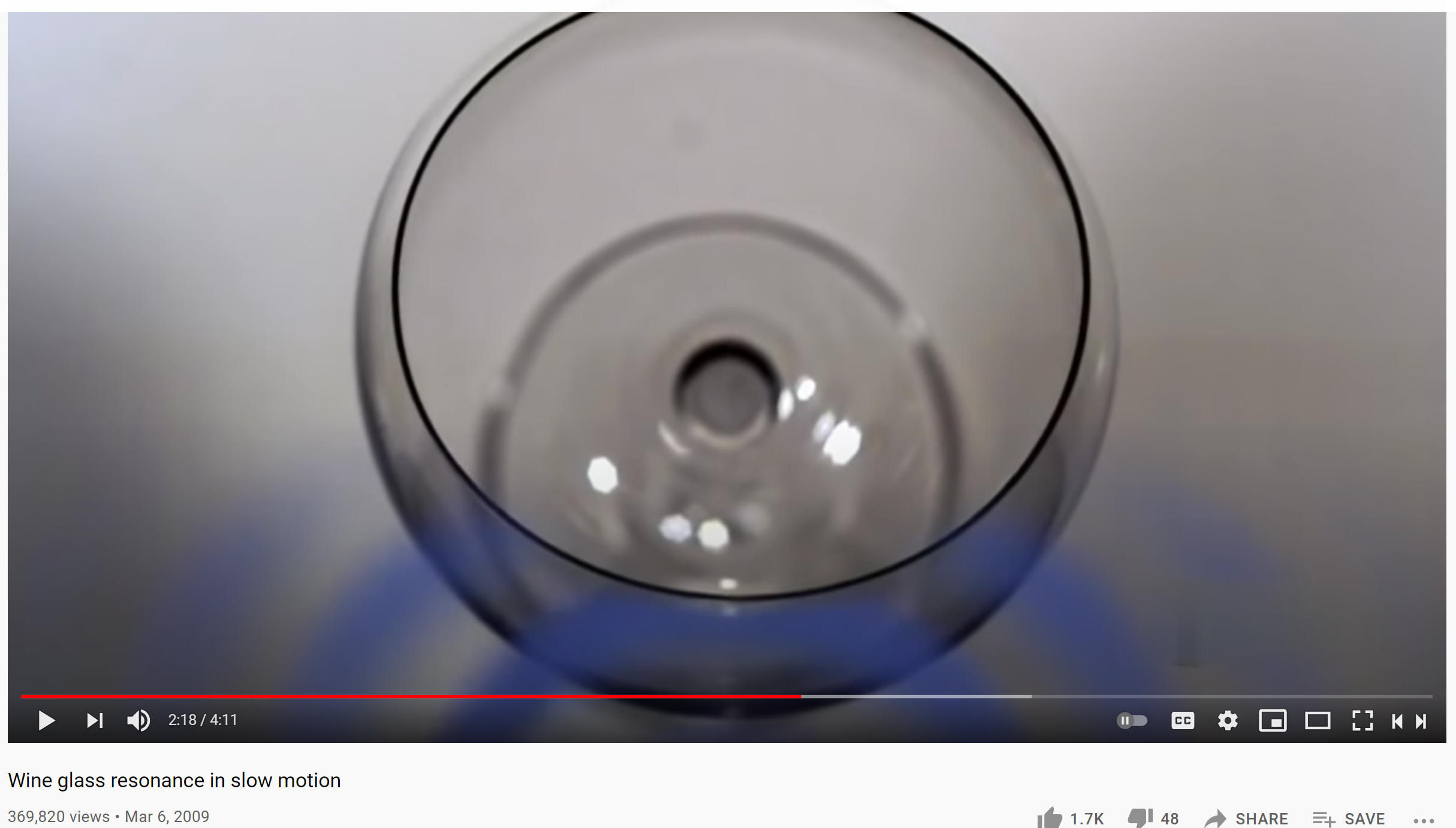 Class 76
Tuesday,
6/1/21
Class 76
Tuesday,
6/1/21Warm Up:
How can one's voice break glass?
-
Watch this one before the other one: Tacoma Narrows Bridge collapse -- Old footage
-
Watch the other one before this one: Tacoma Narrows Bridge collapse -- Discussion
Today -- Everyone --
- Review the practice test -- test on Friday!
- Waves/sound notes part 2 -- One last bit of notes. We are
not going to finish the packet. Some concepts...
- How ukuleles work
- Sound waves (longitudinal waves), and how they are represented as transverse waves
- Beats
- Resonance
- Resonant modes of a drum
Blue Group: See Gold group Wednesday assignment (class #73)
Gold Group: See Blue group Tuesday assignment (class #72)
Blue Group: See Gold group Tuesday assignment (class #72)
Gold Group: See Blue group Monday assignment (class #71)
I will be at the Meet for anyone who has questions, but the assignment will be asynchronous, since blue and gold are at different places.
Blue Group:
20.4 -- Electric Power and Energy
Practice -- 20.3, 20.4, 21.1:
- Equivalent Resistance Challenge (These are harder than the problems we have been working on recently. #2 is especially tricky.)
- Equivalent Resistance Challenge Solutions
- Video Explaining Solutions -- Equivalent Resistance Challenge
Gold Group: Google Classroom Assignment #6 (Test Review -- Circuits and Current)
- Complete the practice test: Mr. Pennington's old Test Scanned Solutions Multiple Choice Video Solutions Video Solutions to Problems
- Mr. Pennington's test review sheet
Blue Group:
- Instrument construction, LAST DAY.
- Finish anything that you didn't get to yesterday
- Tune and play!
Gold Group: Google Classroom Assignment #5 (20.4 -- Electric Power and Energy)
Practice -- 20.3, 20.4, 21.1:
- Equivalent Resistance Challenge (These are harder than the problems we have been working on recently. #2 is especially tricky.)
- Equivalent Resistance Challenge Solutions
- Video Explaining Solutions -- Equivalent Resistance Challenge
Blue Group:
- Instrument construction, 2nd to last day. Hopefully you
will get to all of this today, so that you can just tune and play
tomorrow...
- Install Frets
- Glue/assemble tuning knobs
- Attach sliders (may require a little glue removal in grooves)
- Add the bridge and nut (you can lightly hot glue the nut)
- Add strings
- Tighten strings (New strings will loosen a lot. They will go out of tune almost immediately until they get stretched).
- Tune (but, as I mentioned, it won't stay in tune for very long)
- ***If you're behind, have me sign you up for my AST tomorrow.
Gold Group: Google Classroom Assignment #4 (20.3: Resistivity and Resistance, 21.1: Resistors in Series and Parallel.)
- Practice:
- One Resistivity Practice Problem Solution
- Worksheet: "Circuit Reduction -- The Nine Companions"
- Solutions to nine companions
- Solutions Video for nine companions
Warm Up: None
Blue Group: See Gold group Wednesday assignment (class #68)
Gold Group: See Blue group Tuesday assignment (class #67)
Warm Up: None
Blue Group: See Gold group Tuesday assignment (class #67)
Gold Group: See Blue group Monday assignment (class #66)
Warm Up: None
Today's agenda:-- IMPORTANT -- make sure that you complete the notes and watch the videos. I think you will end up with significant gaps in your understanding if you try to cut corners.
-- Address anyone's questions -- but particularly the Gold group's questions about the current and circuits unit.
Today's assignments:
Blue Group: See Gold group Monday assignment (class #66)
Gold Group: 20.2: Ohm's Law
- Unit 10 Packet -- Electric Current and Circuits
- 20.2 Notes and Practice (Ohm's Law) -- Blank Version
- 20.2 Filled-In Notes Notes Video
Warm Up: Watch this video, relating to fret marking and installation.
Blue Group: Instrument Construction/Assembly
- Sand (according to your preferences). Don't over-sand the eges of your fret board.
- Add bridge
- Measure the scale length (from nearest edge of saddle hole to the nut end of the fret board). of
- Enter this length into your fret calculation spreadsheet, to determine fret positions.
- Mark fret positions with pencil, and then make make appropriately tiny notches (possibly with scissors).
- Install the fret string.
Gold Group: 20.1: Current
- Unit 10 Packet -- Electric Current and Circuits
- 20.1 Notes and Practice (Blank Version)
- 20.1 Notes Video
- 19.1 and 20.1 Solutions and Filled-in Notes
- 20.1 Video Discussing Solutions
Warm Up: None
Blue Group: Instrument Construction/Assembly
- Cut neck to length
- Notch neck for headstock attachment
- Assemble body and attach body to neck
- Attach headstock to necks
- Attach neck to body
- Glue fret board to neck
Gold Group: Chapter 19.1 -- Electrical Potential Energy, Potential, and Voltage.
- Unit 10 Packet -- Electric Current and Circuits
- Ch19.1 Notes and Practice
- 19.1 and 20.1 Solutions and Filled-in Notes
- Video of 19.1 notes
- Video of 19.1 practice solutions
Warm Up: None
Today:
Test retake
Homework:
-
None
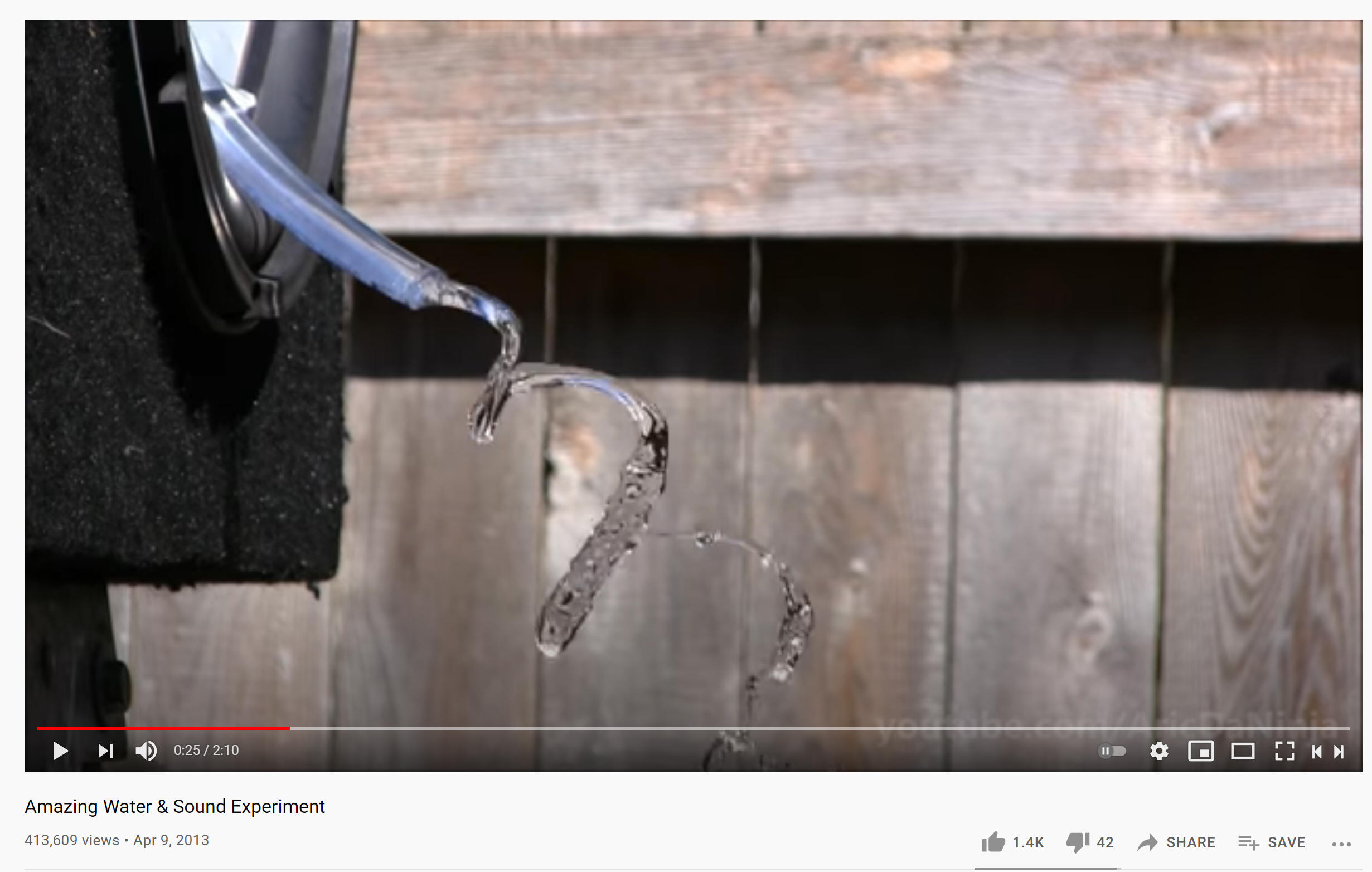 Class
64 Thursday,
5/13/21
Class
64 Thursday,
5/13/21Warm Up: What's happening in the "Amazing Water and Sound Experiment?"
Today:
- Gold Students Only --
- Assemble instrument heads
- See first part of this video (up to about 10 minutes)
- Store in a labeled baggie
- Design sound holes in Rhino 5
- Email me the following (one per group):
- Group member names
- A rhino file with your sound hole design.
- A photo of a sketch showing how you want your sound hole positioned and sized on the instrument
- If you run out of time to create the sound hole drawing in Rhino, send me a screen shot of your drawing or a simple image that I can trace in CAD.
- Assemble instrument heads
Homework:
-
Nothing new
-
Prepare for the test retake
Warm Up:
Today:
- Google Meet at the regular time. Topics...
- Test retake on Friday
- Instrument information
- This week (no electricity): assemble headstocks and submit sound hole designs
- Next week (electricity
stuff on your off days):
- cut necks to length, attach headstocks, assemble and attach bodies
- Add bridges, saddles, and frets -- and (hopefully) strings
Homework:
-
None
-
Prepare for the test retake
 Class
62 Tuesday,
5/11/21
Class
62 Tuesday,
5/11/21Warm Up: What's happening in the "Amazing Water and Sound Experiment?"
Today:
- Blue Students Only --
- Assemble instrument heads
- See first part of this video (up to about 10 minutes)
- Store in a labeled baggie
- Design sound holes (in Rhino? -- Join the EHS Science Team?)
-
Email me the following (one per group):
- Group member names
- A rhino file with your sound hole design and position.
- If you want the experimental curved instrument body, include a note saying that you do [knowing that it may not work out, and I may just give you a rectangular body]
- Assemble instrument heads
Homework:
-
Nothing new
-
Prepare for the test retake
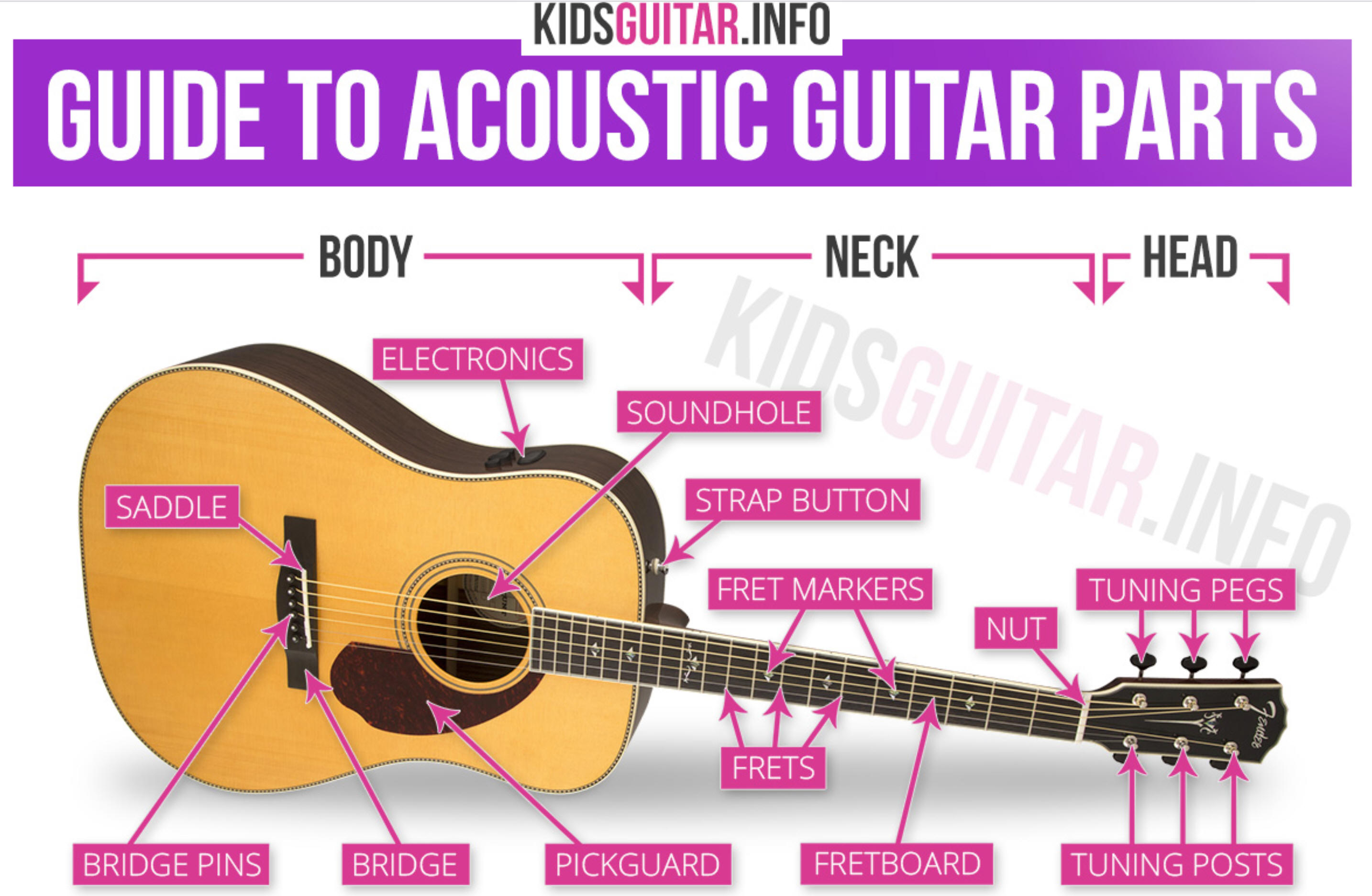 Class
61 Monday,
5/10/21
Class
61 Monday,
5/10/21Warm Up:
In general, if you press down a guitar string farther from the guitar's saddle (or bridge), the note you play will be have a lower pitch (lower frequency). But there is a way to hear a higher pitch by touching the string farther from the saddle.
1. Why do vibrating strings have higher frequencies when the string is pressed down farther from the bridge?
2. Is it possible to play a lower sound and then a higher sound by touching the same string closer to and then farther from the bridge, respectively?
3. How can we visualize these standing waves in a string?
Today:
- Reminder -- Test retake on Friday.
- Gold and Remote students -- no Google Meet and No remote assignment tomorrow. You get a day off. We won't start electric current and circuits quite yet.
- Remote students -- You can design your own instrument sound hole(s). Take a look at examples of sound holes and find something that you like. I will show you how to set up your sound hole to be laser cut. Check in during the Google Meet at the beginning of class on Thursday, to see what the Gold people are doing. I will find a way to get you your supplies, but at this moment I have not yet worked out a plan.
-
Finish the waves/string instrument notes...
Notes: Wave and Music theory relating to fret calculations -- and
fret practice
(pdf version)-- shorten to focus only on fundamental
Filled-in notes
- Wave interference and standing waves
- Standing wave simulation
- Make interfering and standing waves, using a shlinky
- Standing wave video
- Division of the octave
- Calculating vibrating string length (distance from nut to frets).
- Mechanical Waves Links
- Create the fret calculation spreadsheet -- this is a required assignment.
Homework:
-
Due on Wednesday -- [This is a required assignment. Missing assignments will earn zeroes in PowerSchool.] Modify this fret calculation template to create a spreadsheet that will calculate fret positions for any length string. You will use this spreadsheet for calculating your instrument's fret positions. Answers for a 33cm bridge-to-nut distance @440Hz. Video showing how to do this.
 Class
60 Friday,
5/7/21
Class
60 Friday,
5/7/21Warm Up:
The frequency of a wave describes number crests or troughs that pass a particular point in a given amount of time (a.k.a. cycles per second). The units are Hertz (Hz).
1. What is the frequency of the wave pattern on the right?
2. If the distance between two successive crests (i.e. wavelength) is 4m, what is the speed of the waves on the right?
3. What is the formula for wave speed, in terms of frequency and wavelength?
4. What's unrealistic about the bobbing cat GIF?
Today:
- Hand out Unit 10 Packet -- Electric Current and Circuits
- Return Tests. Retake next Friday.
-
Notes: Wave and Music theory relating to fret calculations -- and
fret practice
(pdf version)-- shorten to focus only on fundamental
Filled-in notes
- Wave interference and standing waves
- Standing wave simulation
- Make interfering and standing waves, using a shlinky
- Standing wave video
- Division of the octave
- Calculating vibrating string length (distance from nut to frets).
- Mechanical Waves Links
Homework: None
-
Future homework... Modify this fret calculation template to create a spreadsheet that will calculate fret positions for any length string. You will use this spreadsheet for calculating your instrument's fret positions. Answers for a 33cm bridge-to-nut distance @440Hz. Video showing how to do this.
Warm Up: None
Today: Test -- Remote and Blue, join the Google Meet
Homework:
-
None
Warm Up: None
Today: Optional -- test review session
Homework:
-
Study for test on Thursday (Blue, Gold, and Remote)

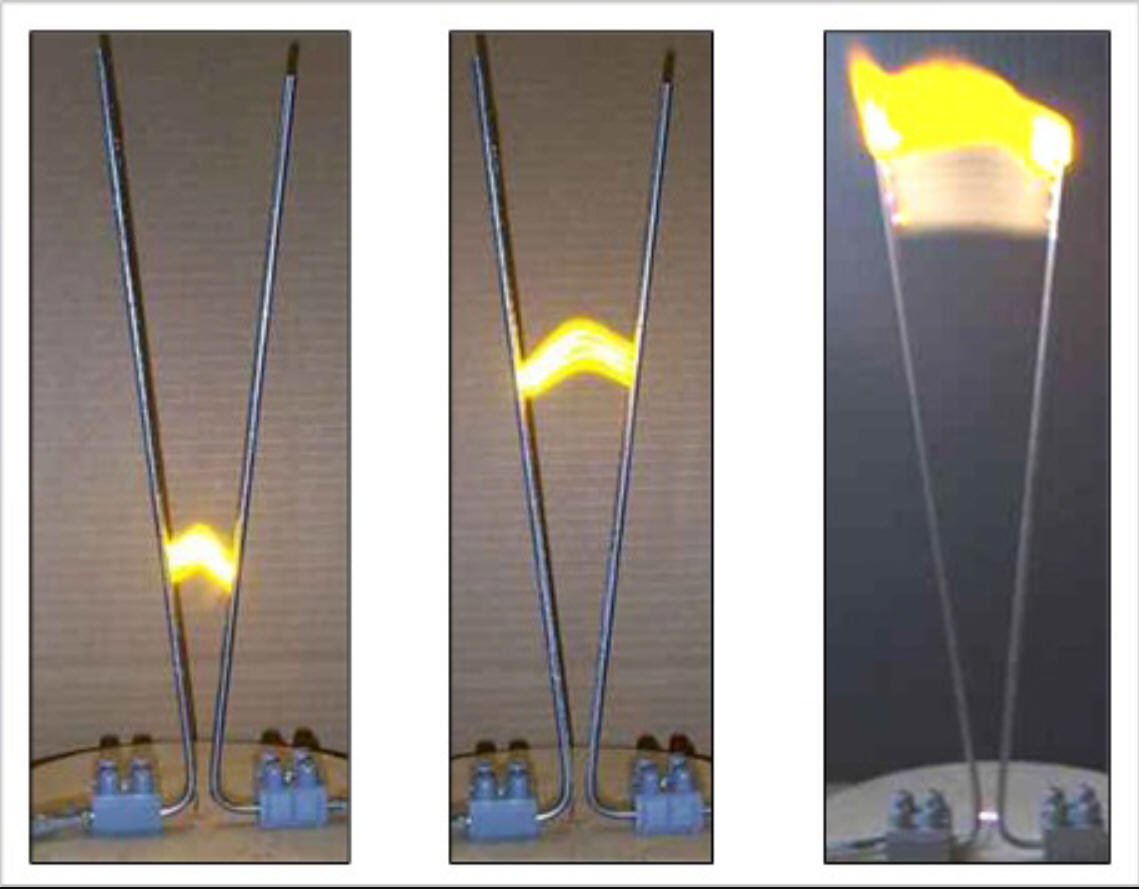 Class
57 Tuesday,
5/4/21
Class
57 Tuesday,
5/4/21Warm Up:
1. What is a spark? Breakdown voltages,
2. How does a jacob's ladder work? How is it used as a safety device?
Today:
- Hand out Instrument Notes
- Review the practice test
- How does an electrophorus work?
- "4 minute drill" and test review. Drill solutions
- Test format: 12 multiple choice, 4 short answer, 6 problems
- Formulas you may need:

- Hand out the instrument notes.
Homework:
-
Study for test on Thursday (Blue, Gold, and Remote)
 Class
56 Monday,
5/3/21
Class
56 Monday,
5/3/21Warm Up:
1. Why doesn't a bird on an uninsulated power line get shocked?
2. Would a bird get shocked if it landed on a Van de Graaff generator?
Today:
-
Review the homework: 18.7 Solutions 18.8 solutions
-
In class, do the Van de Graaff demonstrations from last class.
-
In class? -- do the multiple choice section of Mr. Pennington's test (packet p. 21-23). Then go over the answers.
Homework:
 Class
55 Friday,
4/30/21
Class
55 Friday,
4/30/21Warm Up:
1. Have you ever seen a Van de Graaff generator that did not have a spherical (or hemispherical) dome?
2. Diagram C shows two conductors with excess positive charges. Why do the excess charges reside on the conductors' surfaces? Why are the charges closer together near the pointy part of the rightmost conductor? What implications does this have for Van de Graaff generator design?
Today:
-
Notes: 18.7 -- Conductors and Fields in Static Equilibrium (packet p. 15-16).
Homework:
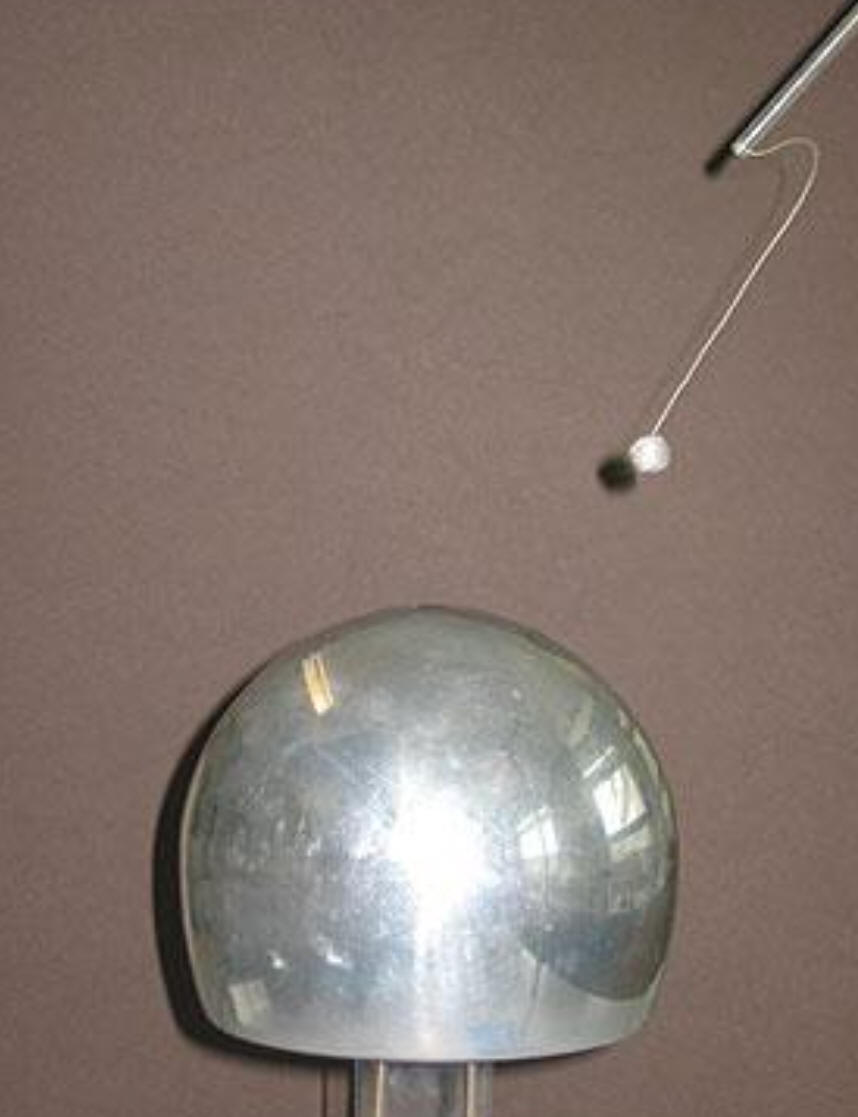 Class
54 Thursday,
4/29/21
Class
54 Thursday,
4/29/21Warm Up: A "pith ball" is hanging next to the dome of a Van de Graaff generator. The pith ball is filled with foam, and it is coated with a conductive paint. Predict and then explain the behavior of a "pith ball" hanging near the Van de Graaff generator.
1. What will happen to the pith ball when the VDG is turned on?
2. What will happen to the pith ball when the dome of the VDG (still running) is grounded?
3. What will happen to the pith ball when the pith ball is grounded (while the VDG continues to run)?
4. Why?
Today:
- Notes: 18.5 (Electric Field lines, packet p. 11-12). Filled-in notes
Homework:
- 18.5 Practice (packet pages 13-14): 18.5 Practice Solutions Pennington 18.5 Practice Solutions
- Answer these questions (Questions with link to simulation) relating the Phet Electric Field Hockey Simulation. The simulation should work on a Chromebook or a laptop (but not an iPad or iPhone). If your computer will run it, the Java version sometimes works better.
 Class
53 Wednesday,
4/28/21
Class
53 Wednesday,
4/28/21Warm Up:
How does a Van de Graaff Generator Work?
MIT video -- inducing dipoles with a VDG
Another video about how a VDG works
Today:
- Notes (packet p.9): Chapter 18.4 -- Electric Field (filled-in notes 18.4) Video from 2019
Homework:
-
18.4 Practice (packet p.10): 18.4 Practice -- Electric Fields 18.4 Stapleton Practice Solutions 18.4 Pennington Practice Solutions

 Class
52 Tuesday,
4/27/21
Class
52 Tuesday,
4/27/21Warm Up:
The electrophorus is charged by rubbing a cat(fur) against the top of an insulating plate (I). Then the conducting plate (C) is placed on top of the insulating plate and is touched by the physicist. Assuming that the cat fur has a strong affinity for positive charge...
1. What is the charge of the plate after it is touched by the scientist?
2. Explain how the conducting plate becomes charged.
3. What is the ground in this demonstration?
Today:
- Watch the gas station fire video (we skipped it yesterday)?
- Discuss the homework.
- Notes: 18.3 -- Coulomb's Laws (packet p. 5) Filled-in Notes
- Video I made last year, explaining how the Electrophorus works
Homework:
-
18.3 Practice (problems 1-5 on packet page 6) Solutions
-
Answer the questions about the John Travoltage Phet Simulation (packet page 8) Old key to John Travoltage Simulation
 Class
51 Monday,
4/26/21
Class
51 Monday,
4/26/21Warm Up:
1. If you rub a balloon on your head and then hold it next to your hair, your hair is attracted to the balloon. Why? Triboelectric Series
2. Your hair may also stand on end after being rubbed by a balloon. Why?
3. What events contributed to this gas station fire?
Today:
- Preview of things to come: Electrostatics, Electric Current/Circuits (String Instruments), Waves/Sound, Optics
- Fix centripetal force equation on page 17 of the Unit 9 Packet.
-
Notes (packet p. 1-3): 18.1 and 18.2 (Static Electricity & Charge, Conductors and Insulators)
-
Video from 2018-19 class -- Sorry for the "terrifying beeping."
-
Return papers
Homework:
-
Practice (packet p. 3-4) -- 18.1 (Static Electricity) 18.1 Practice Solutions Video discussion of solutions
-
Complete the Phet Simulation (Phet Link: Balloons and static electricity) questions on packet p. 7. Old key to Balloon/sweater Simulation
Warm Up: Test retake today. No warm-up.
Today:
- Hand out Unit 9 Packet to Gold group (pdf version)
- Optional test retake for Blue, Gold, and Remote
Homework: Have a great Spring Break!
No class or meet. If you're retaking the test, prepare for the retake tomorrow.
Google Meet -- The topic is the test and the test retake.
No class or meet. Check your email for your test and solutions links. If you're retaking the test, prepare for the retake on Friday.
Warm Up: Test today. No warm-up.
Today:
- Test for everyone.
- Fill out the String Instrument Project Survey
Homework: None.
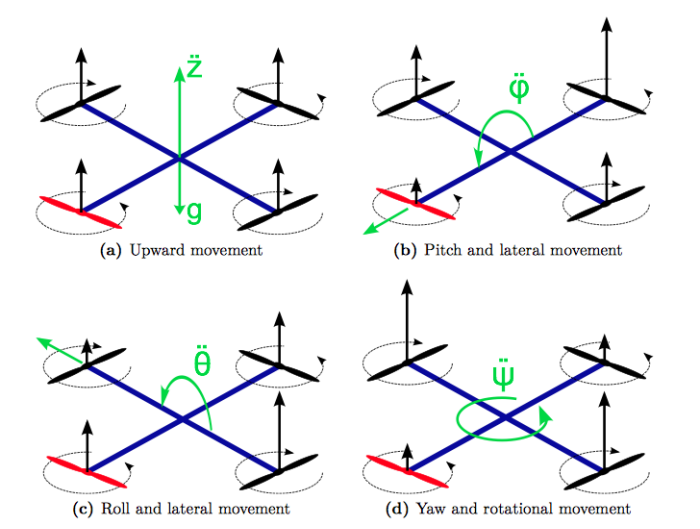 Class
45
Friday,
4/9/21
Class
45
Friday,
4/9/21Warm Up: A quadcopter has four propellers that usually alternate in their directions of rotation.
- How does conservation of angular momentum enable this quadcopter to achieve a yaw?
- In order to pitch or roll, why can't one motor just speed up (without the opposite motor slowing down)?
Today:
- Review the homework
-
Test Review
- Test format
- 4 minute drill Answers
- Test Format:
- 15 Multiple Choice (1 point each) -- study the notes
- 5 problems (30 points
total)
- Apply various angular kinematics formulas
- Convert between angular and linear units
- Torque
- Rotational Version of Newton's 2nd Law
- Angular Momentum
- Conservation of Angular Momentum
- Conservation of Energy with rotational and translational energy
- Torque balancing by locating a fulcrum
Homework: Prepare for the test on Monday (all students -- Blue in person, Gold and Remote via Google Meet)
 Class
44
Thursday,
4/8/21
Class
44
Thursday,
4/8/21Warm Up:
Suppose you need to want to build a camp fire. You have plenty of dry wood, but it's all big limbs that are too long to be manageable and too thick to break over your knee. Without using a saw or an axe, what's the best way to divide the wood into smaller pieces? Can you describe the proper technique? One solution.
Today:
- How can we find the weight of a meter stick using only a 200g hooked mass?
- Review the homework
Homework:
Complete the problem section of Rotational Motion Practice Test # 2, Rotational Motion Solutions to Rotational Motion Practice Test #2. If you don't understand the solutions, watch the videos below. Class 43
Wednesday,
4/7/21
Class 43
Wednesday,
4/7/21Warm Up:
Suppose you need to remove exactly three squares of toilet paper from the roll shown in the picture, and one of your hands is unavailable.
1. What strategy might you use to tear off exactly three squares?
2. Why would this task be easier with a nearly-full roll?
3. The custodians at Burlington High used to remove the rolls when they were almost empty, because it became nearly impossible to pull off more than one square at a time. Can you guess why? Hint: at BHS, the toilet paper fit more tightly on the dispenser axle.
Today:
- Review the homework from yesterday.
Homework:
Complete the multiple choice section of Rotational Motion Practice Test # 2, Rotational Motion Solutions (# 8 is wrong -- should be D) to Rotational Motion Practice Test #2. If you don't understand the solutions, watch the videos below.
 Class
42
Tuesday,
4/6/21
Class
42
Tuesday,
4/6/21Warm Up:
1. Where does a compound bow store most of its energy?
2. What purpose(s) do the pulleys of a compound bow serve?
Today:
- Review the homework from Friday.
-
Extra Credit Real World Problem (begin it together) -- Find the
moment of inertia of some wheels an their axle by accelerating them
with a weight and a wrapped string.
- Axle diameter = 5/16", Mass of falling weight = .154kg, String Length = 84.5cm, Acceleration time = 9.93s, Deceleration time = 3.25s.
- Work on the problem section of Mr. Pennington's practice test.
Homework: Complete the problem section (p.21) of Rotational Motion Test Review #1 Solutions to Pennington Test Review Problem solution video
Warm Up: Test retake day -- Momentum & Impulse
Today:
- No Meet
Homework: See last class.
 Class
40
Friday,
4/2/21
Class
40
Friday,
4/2/21Warm Up:
Falling cats continued...
1
. Can we simulate what this cat does on a lazy Susan?2. We have already agreed that you can't pick yourself up by your bootstraps. This video implies that you can turn yourself around by your boot straps (or maybe by a belt loop). Is this true?
Today:
- Hand tests back in block 4.
- Review the homework
- 10.5 Angular Momentum Notes (p.15) -- Notes Key --
- Do #1 from the practie (p.16) Solution to #1
Homework: This will all be due on Tuesday, since the retake is Monday. There will be no new work assigned on Monday.
- Complete the rest of 10.5 Angular Momentum Notes Practice (packet p. 16-17) Practice Key
- Complete the multiple choice section of Rotational Motion Test Review #1 (packet p. 18-21) Solutions to Pennington Test Review Problem solution video Multiple Choice Solution Video
 Class
39
Thursday,
4/1/21
Class
39
Thursday,
4/1/21Warm Up:
- How do falling cats always manage to land on their feet?
- Why do falling people flail their arms around?
Watch the first part of the video on the right. Watch the rest tomorrow.
Today:
- Review the homework
- Notes: Notes: Rotational Kinetic Energy (p. 13) Notes Key
Homework:
- Kinetic Energy Practice (p.14) Practice Key
 Class
38
Wednesday,
3/31/21
Class
38
Wednesday,
3/31/21Warm Up: A sphere, a cylinder, a thin hoop, and a frictionless box are released from rest at the top of ramp. Their masses and heights are identical. Ignore air resistance (of course).
1. Rank the objects according to their arrival times at the bottom of the ramp.
2. Suppose the bottom end of the ramp is frictionless, and when they reach the bottom, the objects hit a vertical, frictionless wall. What motions, if any, would continue after impact?
3. How would the results be different if some objects had more mass or greater size than others?
4. How would the results be different if the ramp itself were frictionless?
Today:
- Review the homework
- Chapter 10.3-10.4 Notes: Dynamics of Rotation (p. 11) Notes Key
Homework:
- Dynamics of Rotation Practice (p.12) Practice Key
 Class
37
Tuesday,
3/30/21
Class
37
Tuesday,
3/30/21Warm Up:
1. Suppose you need to screw an abutment into a fixture that is implanted in someone's jaw. How can you make sure that you screw it in just tight enough, but not too tight?
2. Assuming that the 100N bar on the right has evenly distributed mass, where (approximately) should a fulcrum be placed in order to achieve zero net torque acting on the bar?
 Today:
Today:
- Go over the test answers and grading. Don't forget that retakes are Monday. Make sure you show up if you want to take the retake. If you have a legitimate reason for being absent on Monday, let me know as soon as you can.
- Review the homework .
-
Notes: Rotational Kinematics
- Chapt 10.2 -- Kinematics of Rotation Notes (p.9) -- Key
Homework: Chapt 10.2 -- Kinematics of Rotation Practice (p.10) -- Key
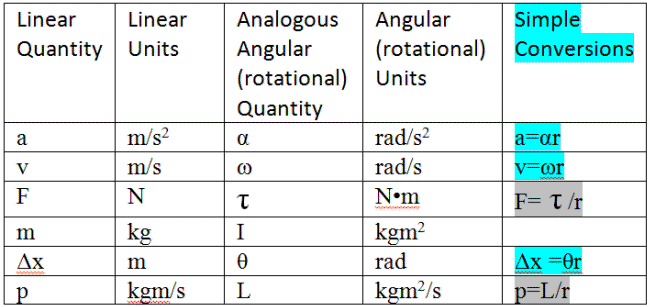 Class
36
Monday,
3/29/21
Class
36
Monday,
3/29/21Warm Up:
In the rotational (angular) motion unit, we will be using new units that are analogous to our current, linear units. You will need to be able to work in radians.
1. 360º = _____ radians
2. 90º = _____ radians
Today:
- Return tests -- Retake will be next Monday.
- Review the homework -- do a torque-balancing problem with the fulcrum in the wrong place
- Notes: Angular Acceleration and Intro to Rotational Kinematics (p.7) Notes key Video from last year's class
Homework: Angular Acceleration Practice (p. 8) -- Key
Warm Up: None -- test today
Today:
- Unit 7 Test for everyone (Gold, Blue, and Remote)
Homework: Torque Practice (packet p. 4-7) Torque Practice Solutions
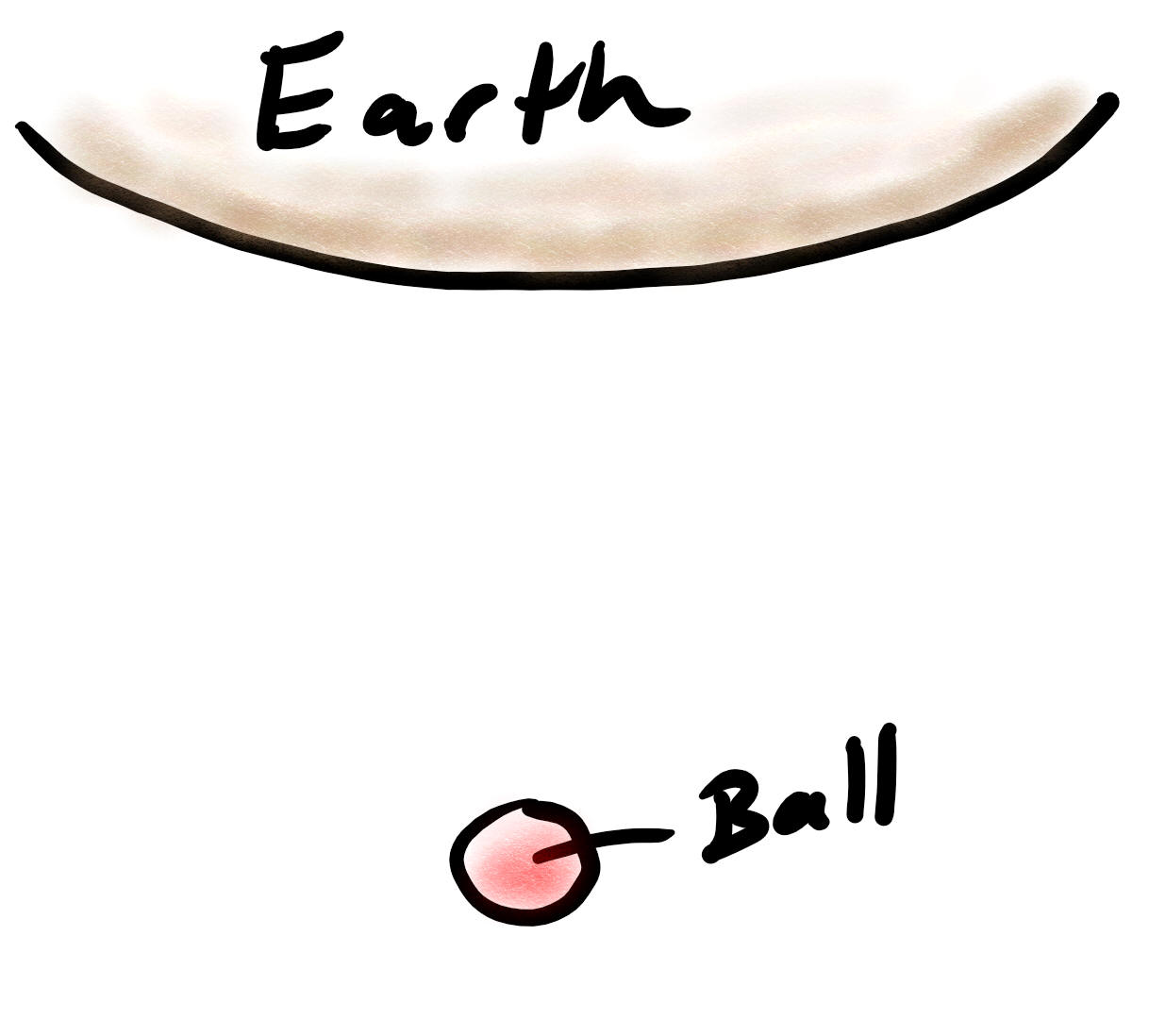 Class
34
Thursday,
3/25/21
Class
34
Thursday,
3/25/21Warm Up:
Consider a system comprising a ball and the Earth. They are held apart by a distance (x) and then released, and the ball falls to the Earth and hits it. Of course, the Earth also moves a very small distance toward the ball. This is repeated with a variety of balls of the same mass (m) and radius (r), separated from the Earth by the same distance (x). Assume that there is no air resistance.1. Describe some types of balls that would produce the highest and lowest impact forces when they collide with the Earth. Explain how these balls' characteristics will affect impact force.
2. Describe some types of balls that would experience the largest and smallest changes in momentum during their collisions with the Earth. Explain how these balls' characteristics will affect impulse.
3. Describe the types of balls that will produce the highest and lowest impulse during their collisions with the Earth. Explain how these balls' characteristics will affect impulse.
4. Go back to number 1 and make sure that your answers were as specific as possible.
5. Compare the Earth's experience to the Ball's experience, in terms of...
- Impact force
- Impact time
- Impulse
- Change in momentum
6. Visualize a graph of momentum vs time for this entire system.
Today:
-
Unit 8 Packet -- Rotational Motion
- Notes: Torque and balancing torques (p. 1-3) Torque Notes Key
Homework: Get ready for the test -- the test will be tomorrow for everyone.

Class 33 Wednesday, 3/24/21
Warm Up:
Suppose I stand a board on end and shoot it with a Nerf ® dart.
1. Am I more likely to knock the board over if I use a dart that sticks to the board or if I use a dart that bounces off of the board? Why?
2. Which experiences a greater impulse, the dart or the board? Or do they experience the same impulse?
Today:
- Discuss the homework from last night, plus the lab from Monday.
- Complete the multiple choice section of the 2017-2018 Momentum and Impulse Test (packet p.13)
Homework:
-
Test on Friday, for everyone. Test review tomorrow. Have your questions ready.
-
Optional extra practice -- Mr. Pennington's Old Momentum Test. Answers/Solutions.
Warm Up: None. Unit 6 Test retake day
Today:
- Blue people -- pick up your Unit 8 Packets.
- Test retakes for Blue, Gold, and Remote
- If you're not working on the test retake, begin the homework.
Homework: Complete the problems section of the 2017-2018 Momentum and Impulse Test (packet p.14-15). Solutions
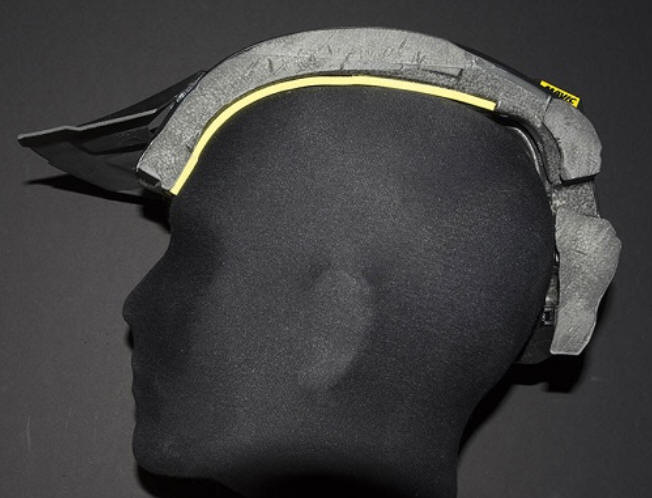 Class
31
Monday,
3/22/21
Class
31
Monday,
3/22/21Warm Up:
How does a helmet protect one's head from the force of an impact?
Today:
- Discuss the homework.
- Collisions Lab:
- Introduction
- In small groups, see if students can find a way to calculate coefficient of restitution. Try to solve this example problem... a ball that is dropped from a height of 60cm rebounds to a height of 40cm. What is the coefficient of restitution for this collision between the ball and the floor?
- Watch the three short videos below and then use the data to
complete the table and questions in the packet (packet p. 11-12)
(Unit 7 Packet)
- Video 1: Data Collection, Part 1
- Video 2: Data Collection, Part 2
- Video 3: Data Explanation
- Lab Data
Homework:
-
Tomorrow: Test retake for everyone -- Gold will do it virtually
-
Finish the collisions lab by Tomorrow evening. Then check your answers by watching this video discussion . If you have questions, ask them on Wednesday.
Friday, 3/19/21 -- No School. Parent-Teacher Conferences
 Class
30
Thursday,
3/18/21
Class
30
Thursday,
3/18/21Warm Up:
A potato launcher uses compressed air to push a chunk of potato out of a pvc tube ("barrel"). The air, which is compressed to 40psi, can be quickly released by pulling the trigger.
1. Will the potato reach a higher velocity if it is inserted at point A or at point B?
2. Will the potato reach a higher velocity if a 0.5m long barrel is used, or if a 1.5m long barrel is used?
3. Explain your answers in terms of momentum and/or impulse.
Today:
- Discuss Homework
- Notes on Ballistic Pendulums (packet p. 5-6) (Unit 7 Packet) Notes key
- Demo/experiment: effects of barrel length and initial projectile position on projectile velocity
- My ballistic pendulum initial velocity calculator
Homework: Complete #16-18 (conceptual questions and ballistic pendulum) on packet p.10. Problems Key If you have questions, watch the solutions video.
 Class
29
Wednesday,
3/17/21
Class
29
Wednesday,
3/17/21Warm Up:
1. When one Newton Cradle ball hits another, the first ball stops and one other ball starts moving at the first ball's initial velocity. Why don't two balls begin moving half as fast as the first one? Or three balls at 1/3 the original speed? Wouldn't momentum be conserved in any of these ways?
Today:
- Discuss Homework
- Notes on Elastic/Inelastic Collisions and Coefficients of Restitution (packet p. 3-4) (Unit 7 Packet) Notes key (In the notes key, I made some mistakes on #22 -- coefficient of restitution example -- I believe the answer is correct, but the variables are mislabeled confusingly.)
Homework: Complete 13-15 of "Elastic/Inelastic Collision Problems..." on packet p. 9-10. Problems Key
 Class
28
Tuesday,
3/16/21
Class
28
Tuesday,
3/16/21Warm Up:
1. What will happen if I hold a tennis ball on top of a basketball and drop them to the floor together?
2. What if I reverse their positions?
3. Why does this happen?
 4.
Which version of the impulse formula (on the right) do you think
is more useful? Why?
4.
Which version of the impulse formula (on the right) do you think
is more useful? Why?
Today:
- Return tests and discuss the grading
- Important dates: Put these dates in your calendar and
don't schedule other appointments for these times (if they apply to
you). You are expected to take tests on time unless your
reason for not taking the test is worthy of an excused absence.
- Tuesday, 3/23 -- Retakes for Everyone (Blue, Gold (remotely), and Remote).
- Friday, 3/26 -- Unit 7 Test for Everyone (Gold, Blue (remotely), and Remote).
- Discuss the homework.
- Notes on conservation of Momentum (packet p. 3) (Unit 7 Packet) Notes key
- Do a few simple example problems
Homework: Complete 7-12 of "Conservation of Momentum -- Basic Problems" on packet p. 8. Problems Key Homework help video
Warm Up: None.
Today:
- No Meet
- Present donuts
- Unit 6 Test
Homework: Nothing new. See Google Classroom for the most recent assignment. It's due tomorrow.
Warm Up: None.
Today:
- No Meet
- Present donuts
- Test
Homework:
-
Gold: This is due on Tuesday... Watch this Momentum and Impulse Notes Video (corresponds to p.1-2 of the new, Unit 7 Packet). Then complete problems 1-6 on page 7 of the new packet (Unit 7 packet). Number 4 is tricky. I don't expect everyone to be able to solve it without looking at the solutions or the video.
-
Blue: prepare for the test on Monday.
Warm Up: None. Instead, let's take a brief moment for questions about tomorrow's test.
Today:
- Hand out Unit 7 Packets (Linear Momentum and Impulse)
- Egg Bungee Jump Challenge:
Directions and data sheet
pdf
- Directions
- Data collection
- Determining Low Point
- Testing (bungee jump(s))
Homework:
-
Blue and Remote: This is due on Tuesday... Watch this Momentum and Impulse Notes Video (corresponds to p.1-2 of the new, Unit 7 Packet). Then complete problems 1-6 on page 7 of the new packet (Unit 7 packet). Number 4 is tricky. I don't expect everyone to be able to solve it without looking at the solutions or the video.
-
Gold: prepare for the test. Complete the momentum and impulse stuff (above) after the test.
Warm Up:
1. A lightweight object and a very heavy object are sliding with equal speeds along a
level frictionless surface. They both slide up the same frictionless hill.
Which rises to a greater height?
A) The lightweight object, because it weighs less.
B) They both slide to the same height.
C) The heavy object, because it has greater kinetic energy.
D) Cannot be determined from the information given.
Today:
- Discuss the homework
- Test Review
- Format:
- 12 Multiple Choice
- 6 Problems -- 14 parts in all
- Problems relating to...
- Simple work formula
- Work done by a force in a different direction, relative to movement
- Work-Energy Theorem
- Power
- KE formula
- PE formula (gravitational)
- kWh (kiloWatt-hours) and energy cost
- Conservation of Energy (with and without non-conservative work)
- Spring force
- Spring PE
- Roller coaster problem with multiple parts -- partly with friction, partly without friction, one spring included
- Nothing about efficiency
- Drill and Practice Excercise (p. 18 of the packet -- Unit 6 Packet -- Work and Energy)
- Format:
Homework:
-
No homework
-
Blue and Remote -- Test on Monday
-
Gold -- test on Friday
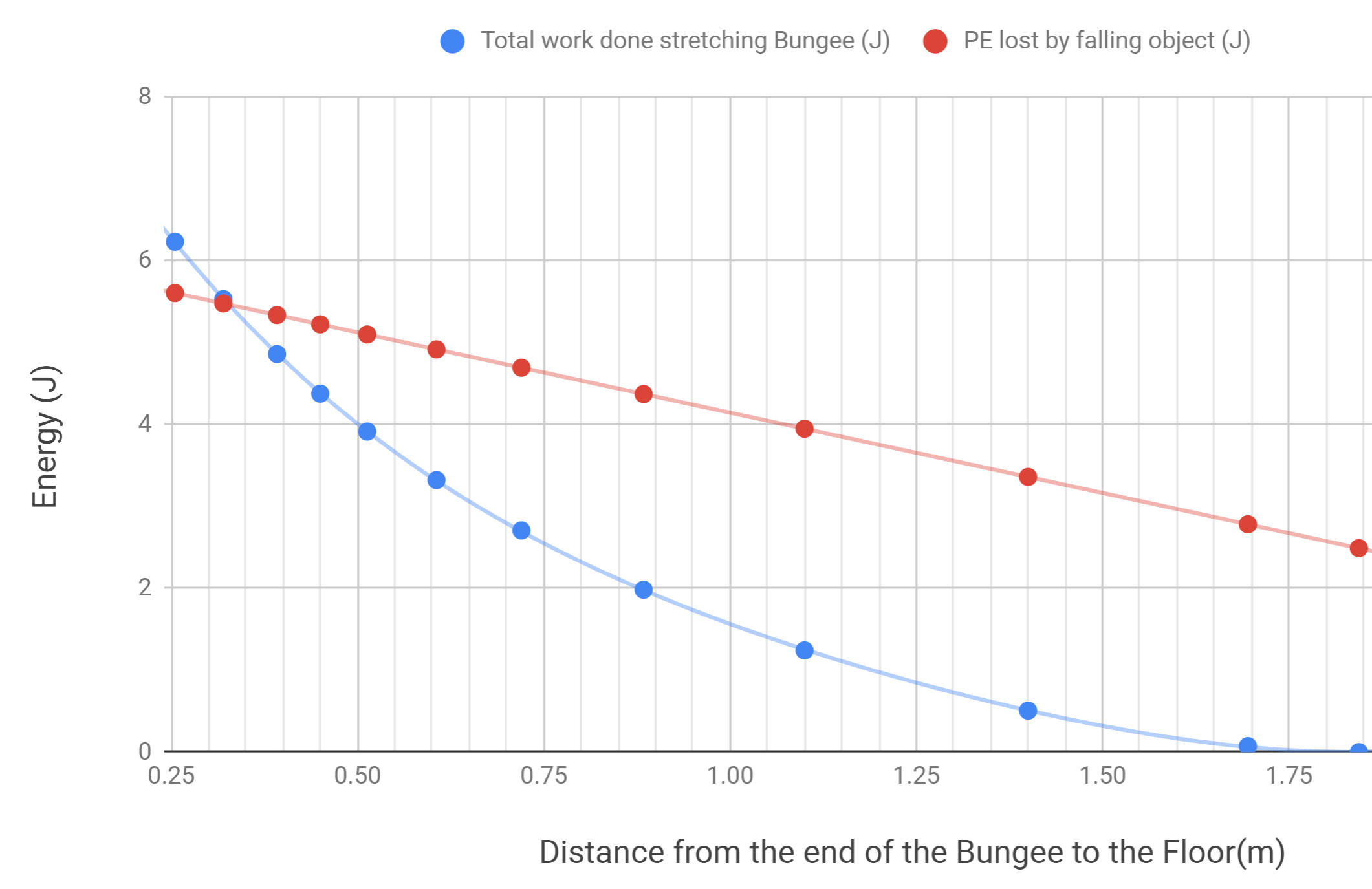
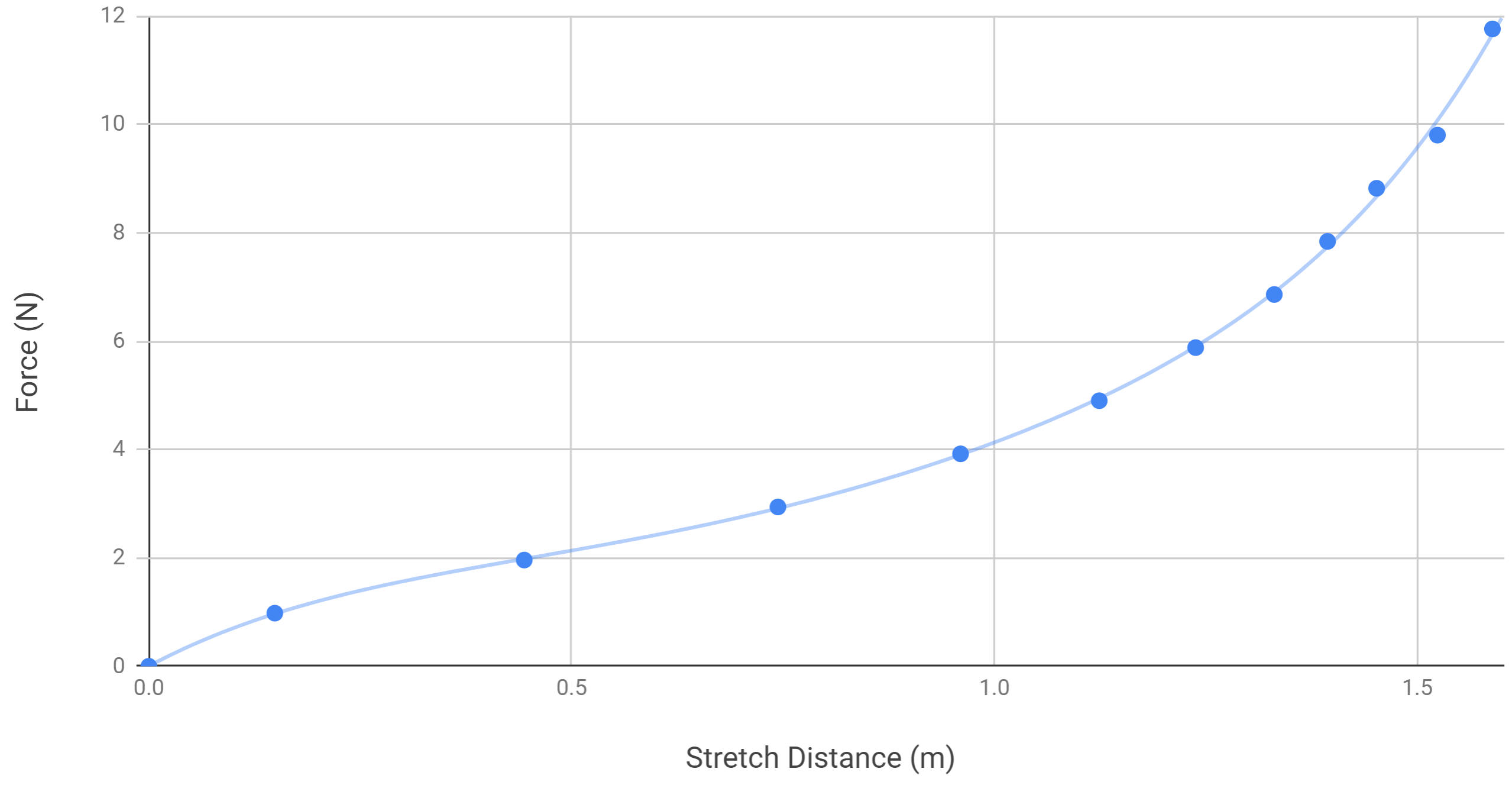 Class
23
Tuesday,
3/9/21
Class
23
Tuesday,
3/9/21Warm Up:
1. When you collect force and stretch distance data, is it better to remove the weights between each measurement, or should you leave the weights hanging on the bungee throughout the entire measurement process?
2. Given these two options, if you chose the less sensible procedure, is it likely that your final estimate of the egg's low point would be too low, or would it likely be too high? Explain.
Today:
Egg Bungee Jump Challenge: Directions and data sheet pdf
Homework: Complete the remaining problems (we already did #4) from Pennington 2015-2016 test (packet p. 11-15). Solutions.
Warm Up:
1. When does each of these energy conservation equations apply to the diagram below?
2. Would your answer change if this were a completely frictionless environment?


This Week and Next:
-
Monday -- bungee jumping spreadsheets
-
Tuesday -- Blue Egg Bungee Jump Contest. "Groups" of 1-3 students pursue a bungee jump where a weighted egg (weight TBD) comes closest to a ceramic tile without breaking. You get two tries. You specify a conservative tile height (first drop) and a risky tile surface height. Both heights must be determined before the first drop. The prize is donuts (or the gluten-free equivalent). Remote students are excused, but you are welcome to team up with students in class if you want.
-
Wednesday -- Test review
-
Thursday -- Gold bungee jump contest. Same details as Blue group (see Tuesday).
-
Monday -- Blue test
Today:
- Discuss the homework. -- bungee problem number 2
- Explain the spreadsheet assigment, below.
-
Bungee Jumper Spreadsheet:
Create a spreadsheet that will allow you to quickly calculate the
lowest position of a bungee jumping egg.
-
Use this template. This
Egg
Bungee Figure provides clarifying details about the cells
int the template. Check your calculations with this
screenshot.

- Video Clarifying the project and how the spreadsheet works
- Spreadsheet Help Video
-
Use this template. This
Egg
Bungee Figure provides clarifying details about the cells
int the template. Check your calculations with this
screenshot.
Homework:
Finish the spreadsheet (above)
 Class
21
Friday,
3/5/21
Class
21
Friday,
3/5/21Warm Up:
A piece of elastic hangs from the ceiling. A weight is attached to the end of the elastic and released. The weight falls and bobs back up through two cycles.
1. Sketch a graph of energy vs time for this event if we assume that mechanical energy is conservedd. On your graph, include separate curves for PEgravitational, PEspring, KE, and Total E.
2. How would the graph look different if internal friction and "other energy" were included?
Today:
- What do K, U, and Q stand for?
- Discuss yesterday's homework
- "Bungee Jumper Problems" on pages 16 and 17 of the packet (Unit 6 Packet -- Work and Energy) Solutions
Homework:
-
Complete bungee problem #2 -- packet p. 17.
Warm Up: None -- to save time for test retakes
Today:
- Briefly discuss the homework -- especially #3.
-
Gold and Remote opportunity for test retake.
Homework:
-
Watch this video and finish the notes on packet p. 8 ("other energy," electrical energy, and efficiency) Notes key
-
Complete Multiple choice (1-16) and Problem #4 from Pennington 2015-2016 test (packet p. 11-15). Solutions. Note -- I think the real answers to #5 and 6 are not the same as the expected answers to #5 and 6. See if you can figure out what's wrong with those multiple choice questions.
 Class
19
Wednesday,
3/3/21
Class
19
Wednesday,
3/3/21Warm Up: Bonus question due on Friday (email or on paper) -- Assuming that mechanical energy is conserved, at precisely what minimum speed must a car enter a 10m radius loop-the-loop in order to not lose contact with the road surface?
Today:
- Notes: Springs + Odds and Ends Notes key
- pHet Energy skate park -- Graphs of potential, kinetic, thermal, and total energy.
Homework:
-
"More Work and Energy Practice Problems" #1

